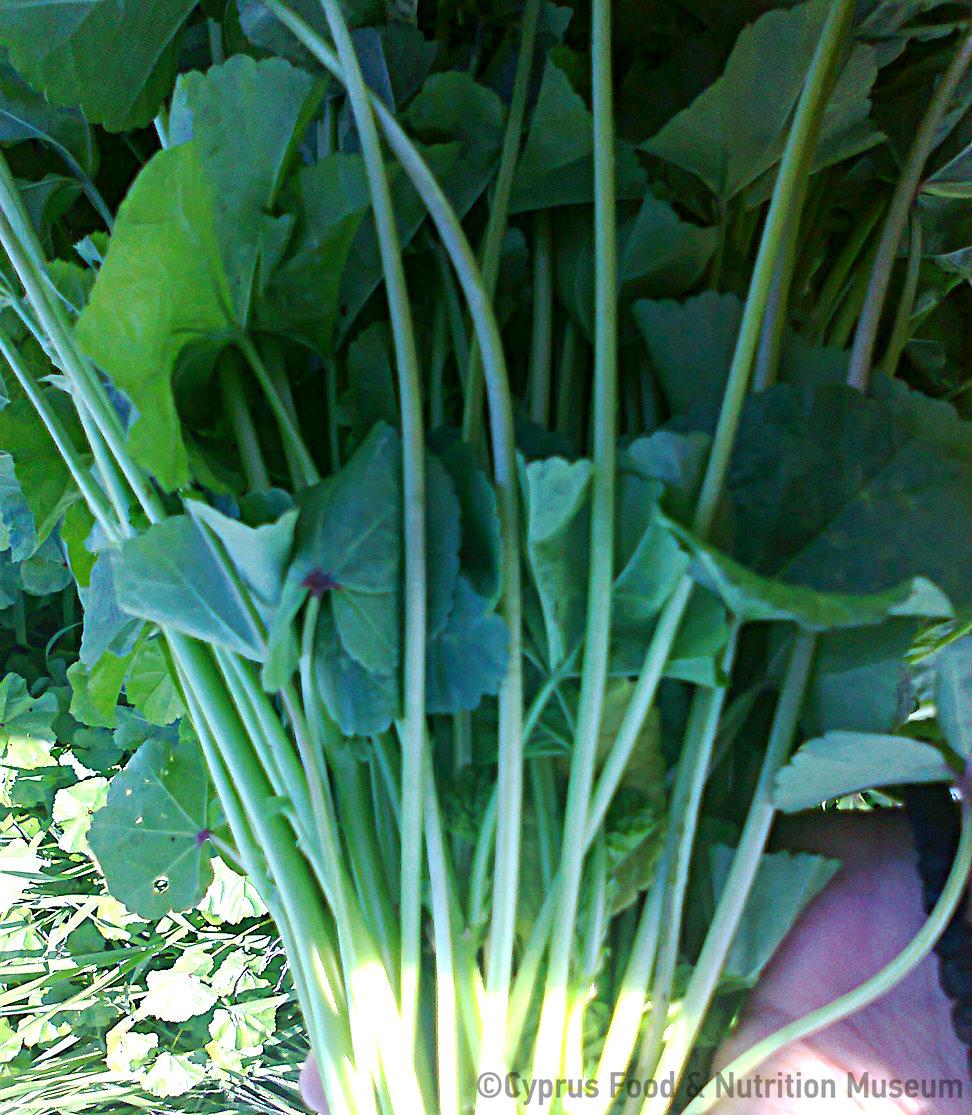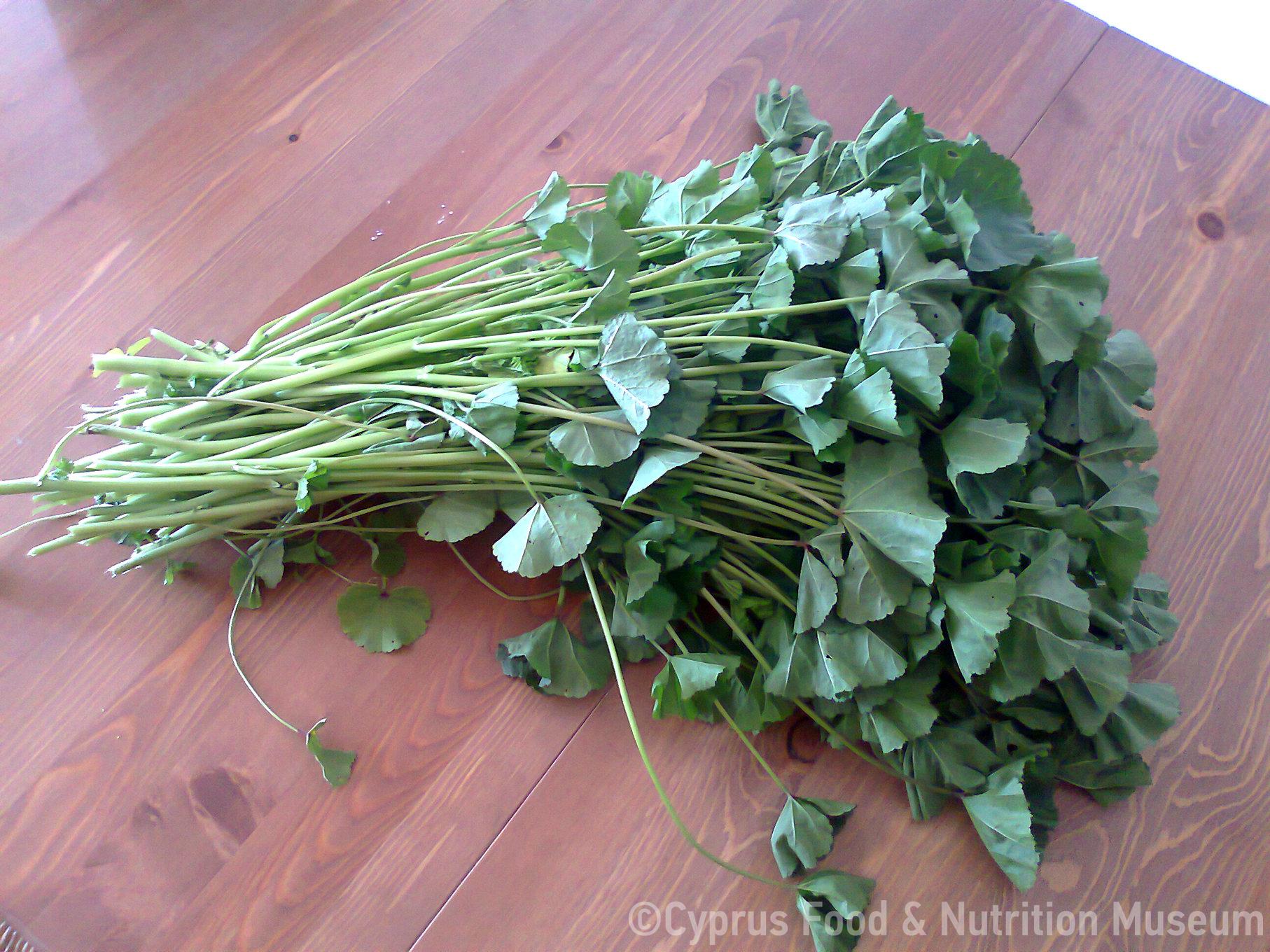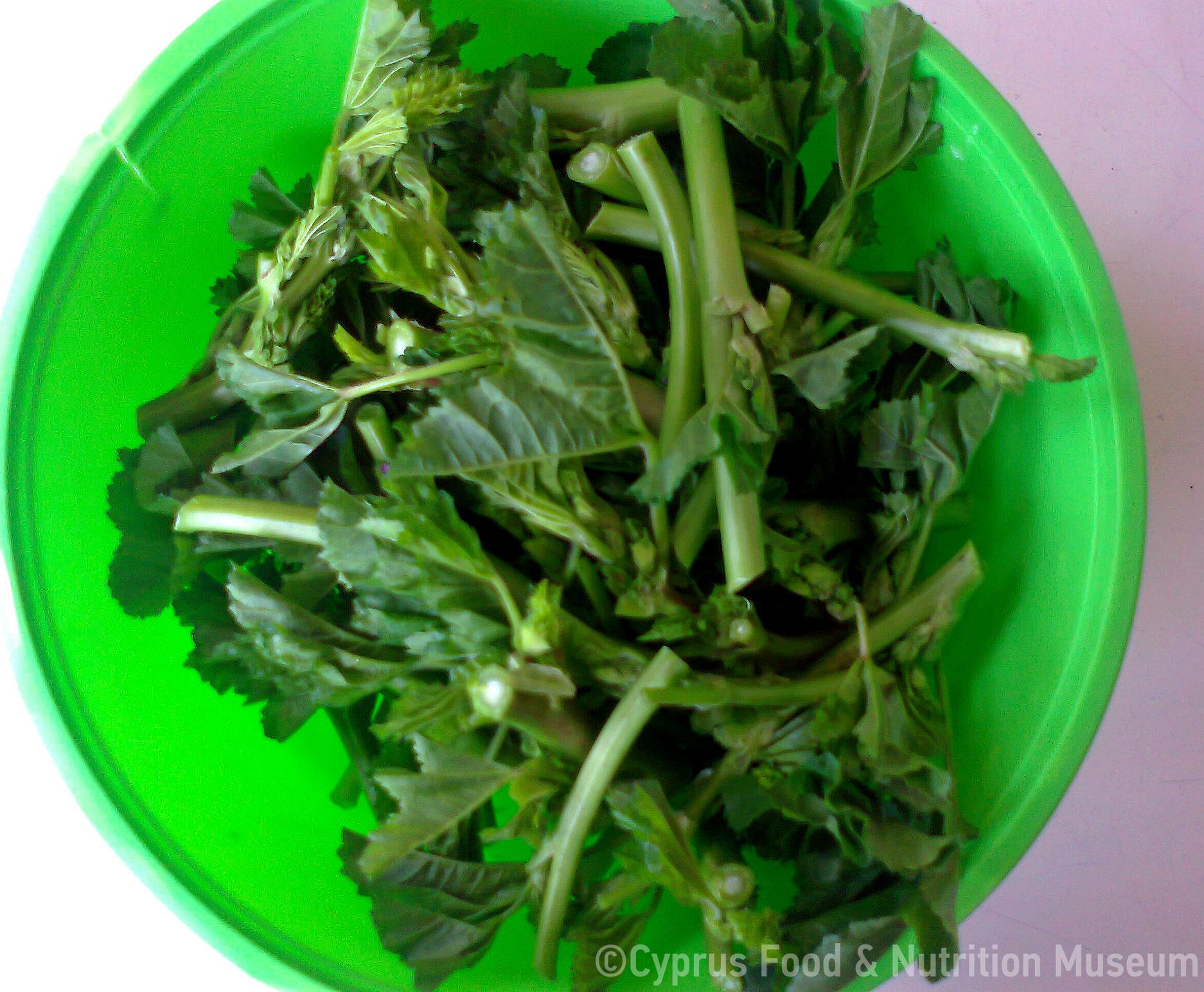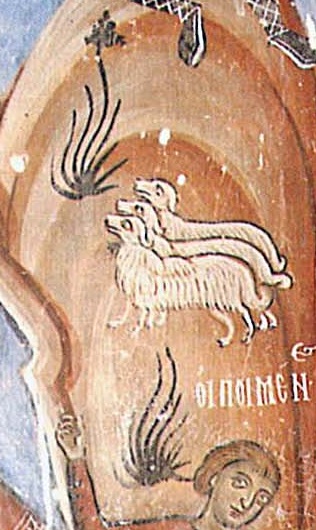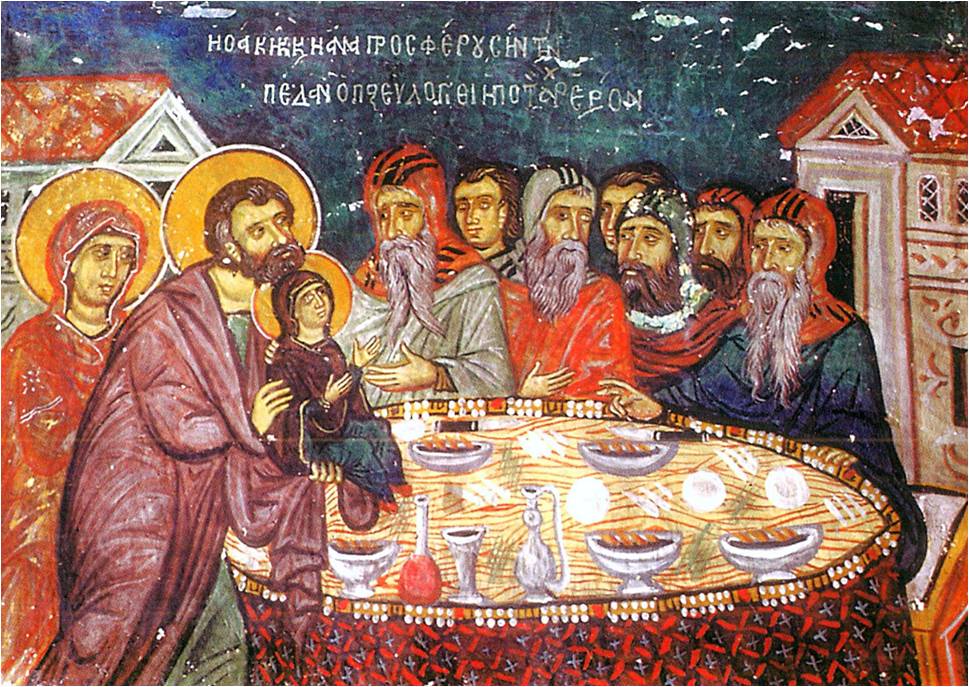Name - Origin
Είδος μαλάχης. A native edible green.
Scientific name: Malva (Kypri 1983 [2003²], entry μολόχα,η, 180) - Malva parviflora (Wikipedia, «Μολόχα»)
pl. molóshes (Kypri 1983 [2003²], entry μολόχα,η, 180)
Boiled and served with oil and lemon juice or cooked with various legumes. It is harvested from January to April (Kantzilaris 2007, 265).
In Palaichori, they would boil the mallow and add a bit of oil and flour. Mallow was also added to legumes (Psillita-Ioannou 2010, 59).
Functional and symbolic role
Mallows are consumed as a soup. They are often fried when the stem is thick. They were particularly sought after by poor peasants (Kypri 1983 [2003²], entry μολόχα,η, 180).
This plant contains choline, tannin, resin, calcium oxalate, vitamin A, B1, B2, O and minerals. It is used by the pharmaceutical industries for various diseases, both internal and dermal. It helps in the treatment of bronchitis, cough, inflammation, laryngitis, pharyngitis and hoarseness. It is good for gastritis, constipation, cystitis, colic of the intestines and eases stools. It cleanses the liver and increases milk in new mothers who are breastfeeding (Kantzilaris 2007, 265).
Additional information and bibliography
The mallows seem to have healing properties because when children were pricked by nettles they would rub the affected part with them, saying "empa moloha, evga tsouknitha" (in mallow, out nettle) (Kypri 1983 [2003²], entry μολόχα,η, 180).
Kantzilaris G. (2007), Το Καϊμακλί μέσα από το πέρασμα του χρόνου, publication of the new coop of kaimakli, Nicosia.
Kypri Th. D. (ed.) (1983 [2003²]), Υλικά διά την σύνταξιν ιστορικού λεξικού της κυπριακής διαλέκτου, Μέρος Β΄, Γλωσσάριον Ξενοφώντος Π. Φαρμακίδου, Publications of the Centre for Scientific Research, IX, Nicosia.
Psilita-Ioannou P. (2010), Παλαιχώρι: Ιστορία και Πολιτισμός, Platypus Publishing, Athens.
Stalo Lazarou, Eleni Christou, Savvas Polyviou, Argyro Xenophontos
